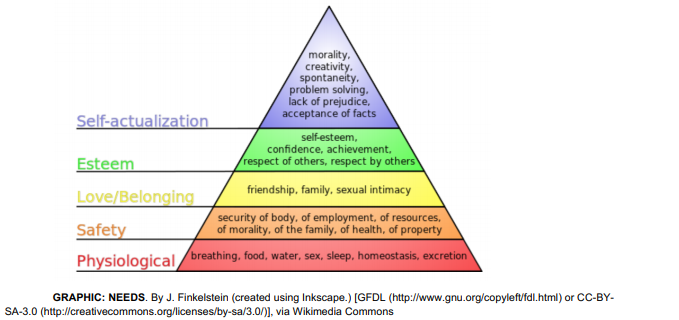3.4: Audience wants and needs
- Page ID
- 25381
One thing to keep in mind when you are writing is what might motivate or move your audience. The American psychologist Abraham Maslow describe this as the hierarchy of needs. He categorized what most humans want or need in five broad categories (see figure below). The most important section are physiological needs, needs of survival, then safety needs, then emotional needs, then psychological needs, then personal needs.

By appealing to the needs and wants of your audience, you can be a more effective writer. This applies to any kind of writing, from entertaining essays, which might include jokes that appeal to an audience’s ideas about love and belonging, to persuasive essays that might pull on basic needs like water or the safety of children.


